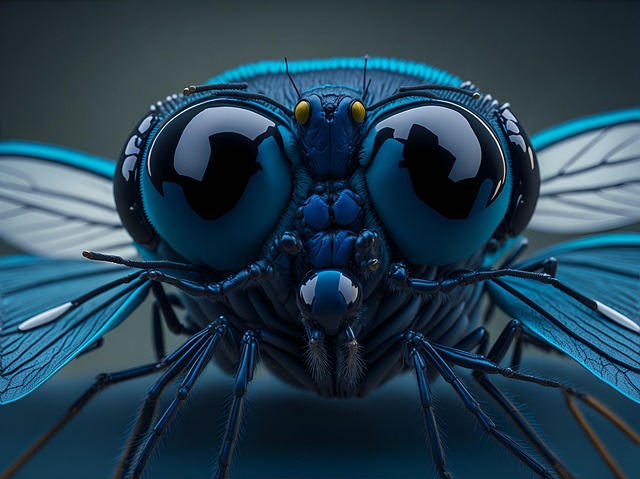Professional stinging pest control services are vital for effective management of bees, wasps, and hornets. Experts use advanced tools like thermal imaging cameras to identify hidden nests, employing targeted strategies for safe and precise extermination. Residential properties require entry point sealing and prevention, while commercial spaces demand more comprehensive approaches due to larger colonies. Professional wasp removal ensures safety and minimizes disruption, catering to both residential and commercial needs through tailored stinging insect control solutions.
In the realm of pest control, understanding stinging pests’ behavior is key to effective management. These tiny creatures, including bees, hornets, and wasps, can quickly transform from inconvenient to dangerous if their nesting areas go unnoticed. A thorough inspection is essential for identifying these hidden habitats, allowing for targeted stinging pest control services. This article explores the art of detecting nesting sites, providing valuable insights into professional wasp removal, bee and hornet control, and stinging insect extermination for both residential and commercial settings.
Understanding Stinging Pest Behavior: Key to Effective Inspection
Understanding the behavior of stinging pests is a critical aspect of effective inspection and subsequent control. Stinging insects like wasps, bees, and hornets have distinct nesting habits and routines that professionals in stinging pest control services must be adept at recognizing. These pests typically build nests in protected areas, often high up in trees or hidden spaces on residential or commercial properties.
Professional wasp removal experts know that early evening is when these insects are most active, looking for food sources. Bee and hornet control measures should consider their preferences for specific types of wood and building materials for nesting. By understanding these behaviors, pest control for stinging insects can be tailored to the needs of both residential and commercial clients. This knowledge enables efficient targeting of nests during inspections, ensuring effective extermination while minimizing disruption to surroundings.
Tools and Techniques for Comprehensive Nesting Area Identification
Comprehensive nest identification is key to effective stinging pest control. Professional wasp removal experts utilise a blend of advanced tools and techniques to pinpoint these hidden habitats. Thermal imaging cameras are a game-changer, detecting even subtle heat signatures left by nests, which can be obscured from naked eyes. Additionally, specialised suction devices and high-powered lights aid in visual inspection, ensuring no corner is overlooked.
Bee and hornet control specialists also employ innovative methods like aerostatic inspections using drones equipped with cameras to capture detailed images of hard-to-reach areas. Moreover, they rely on expert knowledge and experience to recognise signs such as worker bee trails and peculiar plant damage indicative of stinging insect activity. These techniques empower residential stinging pest services and commercial stinging pest removal teams to deliver precise extermination solutions, ensuring safety for both property owners and the environment.
Targeted Strategies for Bee, Hornet, and Wasp Control Services
To effectively manage and eliminate stinging pest problems, such as bees, hornets, and wasps, targeted strategies are essential for both residential and commercial settings. Professional wasp removal services play a crucial role in identifying nesting areas that might be hidden or hard to reach. Skilled technicians use specialized equipment and knowledge to locate and safely remove nests, ensuring minimal disruption to the surrounding environment.
Bee and hornet control measures often involve a combination of inspection, trap placement, and targeted pesticide applications. These methods are designed to disrupt stinging insect behavior while minimizing risks to people, pets, and non-target species. Residential stinging pest services focus on identifying entry points, sealing off areas, and providing ongoing prevention strategies. Commercial stinging pest removal requires a more comprehensive approach due to the potential for larger colonies and increased exposure, addressing the needs of businesses and industries with proactive measures tailored to their specific requirements.
Residential and Commercial Solutions: Eradicating Stinging Insect Nests
When it comes to dealing with stinging pests and their nests, both residential and commercial properties require specialized attention. Homeowners often face the challenge of bee hives, wasp nests, or hornet’s dens, which can pose significant risks to safety and property. In such cases, seeking professional stinging pest control services is essential for effective and safe removal.
Commercial spaces, especially those with outdoor areas or nearby vegetation, may also encounter these issues. Bee and hornet control is crucial for businesses to ensure a safe environment for employees and customers. Professional wasp removal experts employ advanced techniques and equipment to locate and exterminate nests while minimizing disruption to daily operations. These services cater to residential stinging pest problems, offering tailored solutions to address specific species and habitats, and commercial stinging insect extermination, providing comprehensive coverage for larger areas.
Thorough inspections are key to identifying stinging pest nesting areas. By understanding these pests’ behaviors and employing the right tools and techniques, professionals can effectively locate and eradicate nests, providing comprehensive bee, hornet, and wasp control services. Whether it’s for residential or commercial properties, addressing stinging insect issues promptly ensures safety and peace of mind for folks navigating these bustling environments. For reliable pest control solutions, turn to experts specializing in professional wasp removal and bee and hornet control.
